20 11 2014
Microsoft 70-243 Exam Questions Newly Updaed By Braindump2go (1-10)
QUESTION 1
You recently migrated from System Center Configuration Manager 2007 to System Center 2012 Configuration Manager.
Your network contains a client computer that runs the 64-bit version of Windows 7 and the 32-brt version of Widows 7.
Some client computers have the Microsoft Application Virtualization (App-V) client installed.
You have an Application named App1.
You have a 64-bit version of App1, a 32-bit version of App1, and a virtual version of App1.
You need to deploy the Application to all of the client computers.
The solution must minimize the amount of administrative effort.
What should you do?
A. Create a new Application that has three different deployment types and create a target collection for
each of the deployment types.
B. Create a new Application that has three different deployment types and configure global conditions for
each of the deployment types.
C. Create a new package for each version of App1.
D. Create a new Application for each version of App1.
Answer: B
Explanation:
Applications contain multiple deployment types that contain the files and commands necessary to install the software. For example, deployment types for a local installation, a virtual application package or a version of the application for mobile devices. MSI 64, 32 deployment types
Deploy multiple type to multiple collection ( x64, x32, VirtualUserCollection)
You don’t choose to deploy a specific deployment type. Instead, you deploy the application itself. It’s pretty simple in this case, with only one deployment type, as it’s fairly obvious which one will be installed. But if you had multiple deployment types, you would need to specify rules to determine which one is used.
QUESTION 2
Your company uses System Center 2012 Configuration Manager with Microsoft Forefront Endpoint Protection integration.
You deploy Forefront Endpoint Protection to all client computers.
The company uses a management Application named App1.
You discover that Forefront Endpoint Protection blocks App1.
You need to ensure that App1 can run.
How should you configure the Default Client Malware Policy?
(Each correct answer presents a complete solution. Choose two.)
A. Create a software restriction policy.
B. Add a process exclusion.
C. Add a file location exclusion.
D. Modify the schedule scan settings.
E. Click the Use behavior monitoring check box.
Answer: BC
Explanation:
http://technet.microsoft.com/en-us/library/hh508785.aspx
How to Create and Deploy Antimalware Policies for Endpoint Protection in Configuration Manager
QUESTION 3
You have an Application named App1.
You need to ensure that users in the finance department can install App1 by using the Application Catalog.
What should you do?
A. Create a required user deployment and target the deployment to all of the finance department users.
B. Create a required user deployment and target the deployment to all of the client computers in the
finance department.
C. Create an available user deployment and target the deployment to all of the finance department users.
D. Create an available user deployment and target the deployment to all of the client computers in the
finance department.
Answer: C
Explanation:
By selecting "Available" it will be selectable for the users in the Application Catalog.
The "Required" option would force the installation to all users in the finance department.
QUESTION 4
Your network contains a System Center 2012 Configuration Manager environment.
You deploy a Microsoft Office 2007 package to all client computers by using Configuration Manager.
Your company purchases Office 2010.
You need to ensure that all users can install Office 2010 from the Application Catalog.
What should you do?
A. Deploy a new package for Office 2010.
B. Deploy Office 2010 by using a Group Policy Object (GPO).
C. Update the Office 2007 source file and redeploy the package.
D. Deploy a new Application for Office 2010.
Answer: D
Explanation:
http://technet.microsoft.com/en-us/library/gg699369.aspx
Packages and Programs in Configuration Manager
Microsoft System Center 2012 Configuration Manager continues to support packages and
programs that were used in Configuration Manager 2007.
You can use Microsoft System Center Configuration Manager Package Conversion
Manager to convert packages and programs into Configuration Manager applications.
Further information:
http://technet.microsoft.com/en-us/library/gg682125.aspx
Introduction to Application Management in Configuration Manager
QUESTION 5
You deploy Windows 7 by using Operating System Deployment (OSD).
The development task sequence contains steps to install software updates and Applications.
The amount of time required to deploy the Windows 7 image has increased significantly during the last six months.
You need to recommend a solution to reduce the amount of time it takes to deploy the image. What should you recommend?
A. Synchronize software updates before deploying the image.
B. Use offline servicing for the image.
C. Create a new automatic deployment rule.
D. Add an additional Install Software Updates step to the deployment task sequence.
Answer: B
Explanation:
By updating an image in the Software Library instead of performing a new build and capture of the operating system image you will gain a few distinct advantages.
You will be able to reduce the risk of vulnerabilities during operating system deployments and reduce the overall operating system deployment to the end user.
You will also reduce the administrative effort to maintain your operating system images.
The feature is applicable for Component Based Servicing (CBS) updates and for the following operating systems:
Microsoft Windows Vista SP2 and later
Microsoft Windows Server 2008 SP2 and later
Microsoft Windows 7 RTM
Microsoft Windows 2008 R2
* At the launch of ConfigMgr 2012 Beta 2 Microsoft Windows 7 SP1 and Windows Server 2008 R2 SP1 are not supported. They will be supported with Configuration Manager 2012 RTM.
QUESTION 6
You have Windows 7 .mages that are rebuilt quarterly and sported to System Center 2012 Configuration Manager.
The Microsoft Deployment Toolkit (MDT) 2012 is integrated with Configuration Manager.
You need to reduce the network security risks when the images are deployed by using Operating System Deployment (OSD).
What should you do? (Choose all that Apply.)
A. After the Apply Operating System Image task sequence step, add a step to install software
updates offline.
B. Before the Apply Operating System image task sequence step, add a step to install Deployment
Imaging Servicing and Management (DISM).
C. After the installation of the final Application, add an Install Software Updates task sequence step.
D. After the Apply Operating System Image task sequence step, add a Run Command line step
that runs wuaudt.exe /detectnow
E. Before the Apply Operating System image task sequence step, add a step to install the Windows
Automated Installation Kit (Windows AIK).
Answer: AC
Explanation:
With Config Manager 2012, software updatescan be applied offline.
A. We apply the OS image, then install software updates (windows updates) offline before
starting the OS.
C. Install software applications, then install updates (application updates) to the
applications.
INSTALLING SOFTWARE UPDATES DURING SCCM OSD
Preparation:
To be able to deploy software updates during the deployment of Windows 7 using SCCM, the Microsoft Deployment Toolkit (MDT) 2010 Update 1 must be integrated with SCCM.
This integration will add MDT task sequences to SCCM. Adding the Install Updates Offline step to Task Sequence:
To install software updates while Windows 7 is being deployed using SCCM, the Install Updates Offline task should be used in the task sequence used to deploy the OS. This task will install all the software updates included in a specific SCCM deployment package after the image has been applied to the disk. This task should be placed in the PostInstall group just before the Configure task. To insert the task, select the task just above the Configure task, and then click on Add in the pull-down menu bar on the top, hi-lite MDT and click on Install Updates Offline
Configure the task by browsing to select the Updates package that contains the security updates that you want to install.
You can add as many Install Updates Offline tasks as needed as only one package can be included per task.
QUESTION 7
Your company uses System Center 2012 Configuration Manager to distribute operating system images. The standard operating system for client computers is Windows 7 Enterprise (x86).
You receive 300 new desktop computers.
Each computer has a new storage controller. When you attempt to deploy an existing image to one of the computers, you receive an error message indicating that a storage device cannot be found during the pre-boot deployment phase.
You need to ensure that you can deploy Windows 7 to the new computers by using an image. What should you do?
A. Import the storage drivers to the Drivers container and update the task sequence.
B. Create a new x64 boot image and configure the operating system image to use the x64 boot image.
C. Create a new driver package and update the task sequence.
D. Update the existing x86 boot image to include the storage drivers.
Answer: D
Explanation:
http://technet.microsoft.com/en-us/library/gg712674.aspx
Planning a Device Driver Strategy in Configuration Manager
You can add Windows device drivers that have been imported into the driver catalog to boot images. Use the following guidelines when you add device drivers to a boot image:
* Add only mass storage and network adapter device drivers to boot images because other types of drivers are not generally required. Drivers that are not required increase the size of the boot image unnecessarily.
* Add only device drivers for Windows 7 to a boot image because the required version of Windows PE is based on Windows 7.
* Ensure that you use the correct device driver for the architecture of the boot image. Do not add an x86 device driver to an x64 boot image.
QUESTION 8
Your network contains a System Center 2012 Configuration Manager environment.
You plan to create a build and capture a task sequence to build a reference image of Windows 7. You need to identify which Application must exist in Configuration Manager before you can create the build and capture the task sequence.
Which Applications should you identify? (Choose all that Apply.)
A. Microsoft Deployment Toolkit (MDT)
B. Configuration Manager client
C. System Preparation tool (Sysprep)
D. User State Migration Tool (USMT)
Answer: B
Explanation:
Only Configuration Manager client is needed, there is no MDT integration, so MDT and USMT are not needed, Sysprep is built in with Windows 7, no need to create the package.
QUESTION 9
You are the network administrator for a company named Contoso, Ltd. The network contains 1,000 desktop computers and 500 servers. The network contains a System Center 2012 Configuration Manager environment. The names of all the desktop computers in the human resources department start with the letters HR, for example HR001 and HR023. A device collection named All Server Devices contains all of the servers.
A device collection named All Desktop Devices contains all of the desktop computers.
You plan to create a new collection named All HR Computers and Servers. The new collection must contain all of the human resources department computers and all of the servers.
The collection must not contain any other computers.
You need to create a membership rule for the new collection.
Which rule should you include in the membership rule? (Choose all that Apply.)
A. QUERY RULE: select * from SMS_R_System where SMS_R_system.NetbiosName like "HR%"
B. INCLUDE RULE: All Server Devices
C. EXCLUDE RULE: All NON HR Computers
D. EXCLUDE RULE: All Desktop Devices
E. QUERY RULE- select * from SMS_R_System where
SMS_R_system.OperatingSystemNameandVersion like. *%Workstation*
F. QUERY RULE- select * from SMS_R_System where
SMS_R_system.OperatingSystemNameandVersion not like. *%Server*
Answer: AB
Explanation:
select * from SMS_R_System where SMS_R_system.NetbiosName like "HR%"
SQL command to select all Systems whose names begin with HR
INCLUDE RULE: All Server Devices
Selects all the Server Devices as asked in the question.
Further information:
http://technet.microsoft.com/en-us/library/gg682177.aspx
Introduction to Collections in Configuration Manager
Collections in System Center 2012 Configuration Manager represent logical groupings of resources, such as users and devices.
You can use collections to help you perform many tasks, such as managing applications, deploying compliance settings, or installing software updates. You can also use collections to manage groups of client settings.
Additionally, System Center 2012 Configuration Manager uses collections with role-based administration to specify the collections that an administrative user can access.
Collection Rules
Direct Rule
Query Rule
Query rules dynamically update the membership of a collection based on a query that Configuration Manager runs on a schedule.
Unlike direct rule collections, this collection membership automatically updates when you add or remove new users to the Human Resources organizational unit.
Include Collections Rule
The include collections rule lets you include the members of another collection in a Configuration Manager collection. Configuration Manager updates the membership of the current collection on a schedule if the membership of the included collection changes.
Exclude Collections Rule
The exclude collections rule lets you exclude the members of another collection from a Configuration Manager collection. Configuration Manager updates the membership of the current collection on a schedule if the membership of the excluded collection changes.
Note: If a collection includes both include collection and exclude collection rules and there is a conflict, the exclude rule takes priority over the include rule.
Default Collections in Configuration Manager
All User Groups
All Users
All Users and User Groups
All Mobile Devices
All Systems
All Unknown Computers
QUESTION 10
Drag and Drop Question
Your network contains a System Center 2012 Configuration Manager environment.
Three users named User1, User2, and User3 will perform the following tasks:
– User1 will review software metering data and inventory reports.
– User2 will deploy Applications and create alerts.
– User3 will create configuration items.
You need to identify which security role must be assigned to which user.
What should you identify?
To answer, drag the appropriate security role to the correct user in the answer area. Each security role may be used once, more than once, at all. Additionally, you may need to drag the split bar between panes or scroll to view content.
Answer:
Explanation:
Asset Manager
Grants permissions to manage the Asset Intelligence Synchronisation Point, Asset Intelligence reporting classes, software inventory, and metering rules Application Deployment Manager Grants permissions to deploy applications. Administrative users who are associated with this role can view a list of applications, and they can manage deployments for applications, alerts, templates, and packages, and programs. Administrative users who are associated with this role can also view collections and their members, status messages, queries, and conditional delivery rules.
Compliance Settings Manager
Grants permissions to define and monitor Compliance Settings. Administrative users associated with this role can create, modify and delete configuration items and baselines to collections, and initiate compliance evaluation, and initiate remediation for non-compliant computers.
Braindump2go New Released Microsoft 70-243 Dump PDF Free Download, 82 Questions in all, Passing Your Exam 100% Easily! http://www.braindump2go.com/70-243.html
Braindump2go Releases New Microsoft 70-243 Exam Dumps Version! (11-20) New Published SAP C_TSCM62_66 Exam Dumps Free Download from Braindump2go! (1-17)
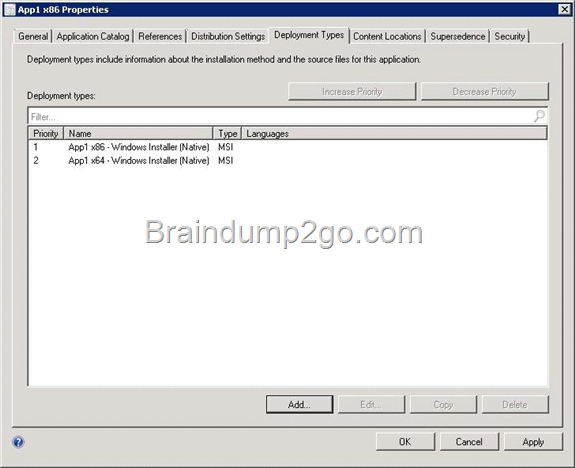
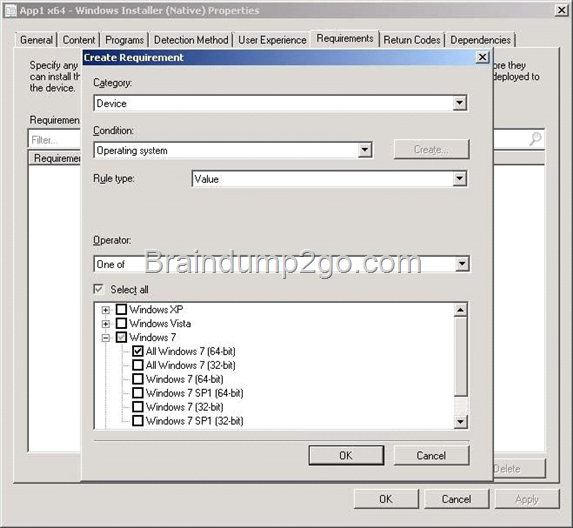
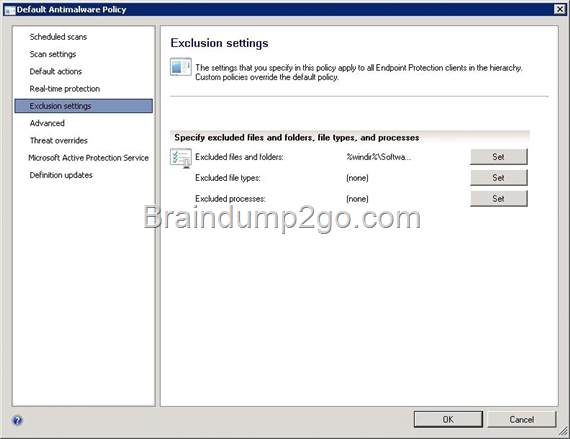
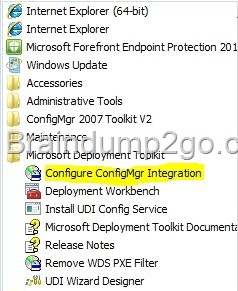
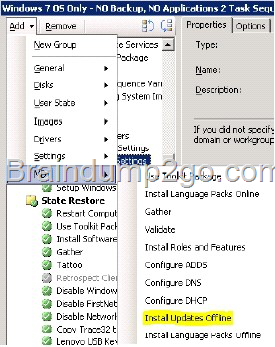
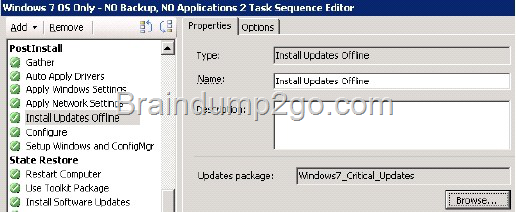
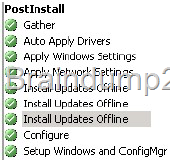


Comments are currently closed.